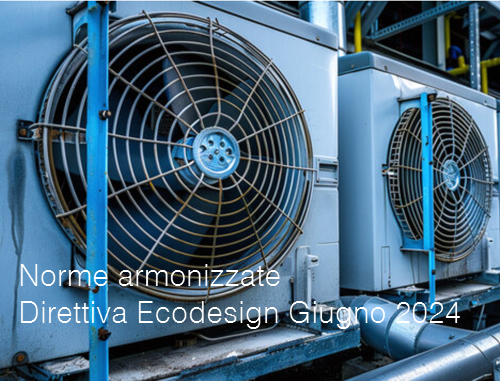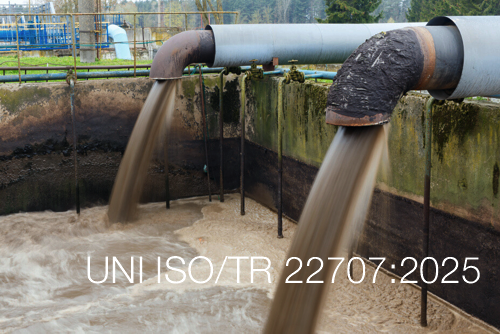Decisione di esecuzione (UE) 2024/1589

Decisione di esecuzione (UE) 2024/1589 - Norme armonizzate Direttiva Ecodesign Giugno 2024
ID 22002 | 06.06.2024
Decisione di esecuzione (UE) 2024/1589 della Commissione, del 4 giugno 2024, relativa al...
ID 22568 | 17.08.2024 / Edition 3, 2024 - Preview attached
ISO 14119:2024
Safety of machinery - Interlocking devices associated with guards - Principles for design and selection
This document specifies principles for the design and selection (independent of the nature of the energy source) of interlocking devices associated with guards and provides guidance on measures to minimize the possibility of defeat of interlocking devices in a reasonably foreseeable manner.
This document covers principles for the design, selection and application of the following:
- parts of the guards which actuate interlocking devices;
- trapped key interlocking devices and systems for machinery applications.
NOTE
ISO 14120 specifies general requirements for the design and construction of guards provided primarily to protect persons from mechanical hazards. The processing of the signal from the interlocking device to stop the machine and prevent unexpected start up is covered in ISO 14118, ISO 13849-1 and IEC 62061.
______
This document was prepared by Technical Committee ISO/TC 199, Safety of machinery, in collaboration with the European Committee for Standardization (CEN) Technical Committee CEN/TC 114, Safety of machinery, in accordance with the Agreement on technical cooperation between ISO and CEN (Vienna Agreement).
This third edition cancels and replaces the second edition (ISO 14119:2013), which has been technically revised.
The main changes are as follows:
- ISO/TS 19837 has been integrated as new Annex K with specific requirements for Type 5 interlocking devices – “trapped key interlocking devices” (see definition 3.18.1);
- trapped key interlocking systems and Type 5 interlocking devices have been defined;
- Table 5 has been improved and renamed;
- test procedures are described in new Annex I;
- ISO/TR 24119 has been integrated into new Annex J.
[...]
This document specifies principles for the design and selection (independent of the nature of the energy source) of interlocking devices associated with guards and provides guidance on measures to minimize the possibility of defeat of interlocking devices in a reasonably foreseeable manner.
This document covers principles for the design, selection and application of the following:
- parts of the guards which actuate interlocking devices;
- trapped key interlocking devices and systems for machinery applications.
NOTE ISO 14120 specifies general requirements for the design and construction of guards provided primarily to protect persons from mechanical hazards. The processing of the signal from the interlocking device to stop the machine and prevent unexpected start up is covered in ISO 14118, ISO 13849-1 and IEC 62061.
[...]
The structure of safety standards in the field of machinery is as follows:
a) type A standards (basic safety standards) giving basic concepts, principles for design, and general aspects that can be applied to all machinery;
b) type B standards (generic safety standards) dealing with one safety aspect or one type of safeguard that can be used across a wide range of machinery:
- type B1 standards on particular safety aspects (e.g. safety distances, surface temperature, noise);
- type B2 standards on safeguards (e.g. two-hand controls, interlocking devices, pressure-sensitive devices, guards);
c) type C standards (machine safety standards) dealing with detailed safety requirements for a particular machine or group of machines.
This document is a type B2 standard as stated in ISO 12100.
This document is of relevance, in particular for the following stakeholder groups representing the market players with regard to machinery safety:
- machine manufacturers (small, medium and large enterprises);
- health and safety bodies (regulators, accident prevention organizations, market surveillance).
Others can be affected by the level of machinery safety achieved with the means of the document by the above-mentioned stakeholder groups:
- machine users/employers (small, medium and large enterprises);
- machine users/employees (e.g. trade unions, organizations for people with special needs);
- service providers, e.g. for maintenance (small, medium and large enterprises);
- consumers (in case of machinery intended for use by consumers).
[...]
Fonte ISO
add preview attached
Collegati

ID 22002 | 06.06.2024
Decisione di esecuzione (UE) 2024/1589 della Commissione, del 4 giugno 2024, relativa al...

ID 23695 | 27.03.2025 / In allegato Preview
UNI ISO/TR 22707:2025
Recupero, riciclaggio, trattamento e smaltimento de...

13 Novembre 2015
Comunicazione della Commissione nell'ambito dell'applicazione della direttiva 2009/48/CE del Parlamento europeo e del Con...
Testata editoriale iscritta al n. 22/2024 del registro periodici della cancelleria del Tribunale di Perugia in data 19.11.2024